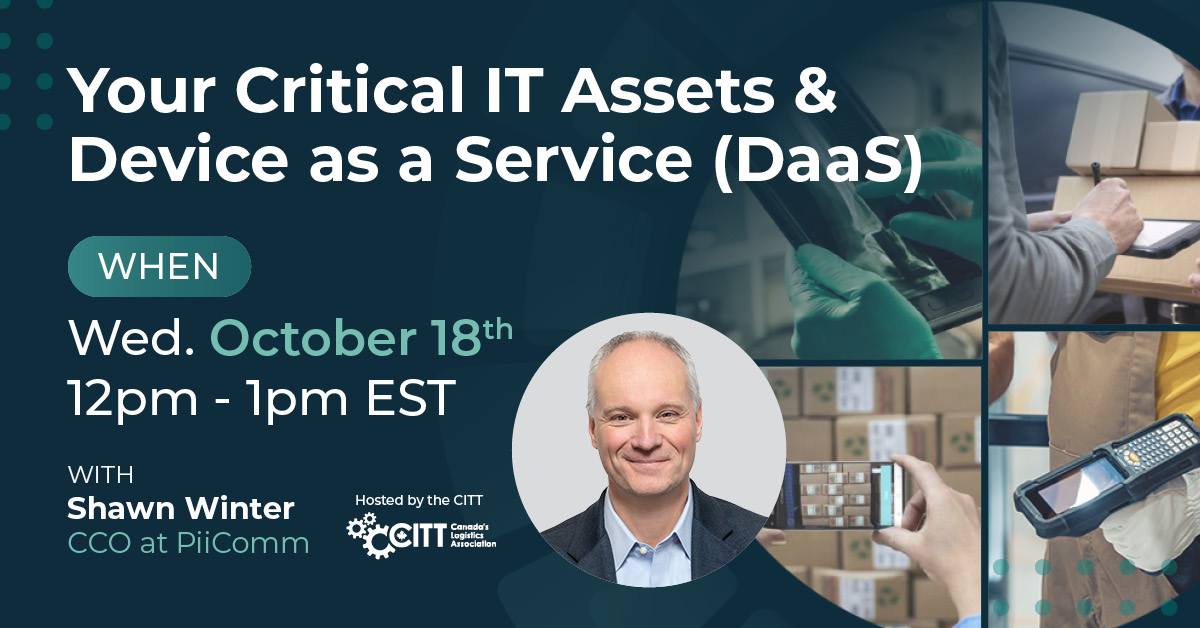
Are you curious about the future of managing your company’s mobile devices? Device as a Service (DaaS) might hold the answers! In this Q&A session, we sit down with Shawn Winter, one of PiiComm’s founders and its CCO, to delve into the exciting world of DaaS and explore why it’s becoming a hot topic in 2023.
Q1: You have an upcoming webinar with CITT. What made you choose DaaS as your topic?
Shawn Winter (SW): Great question. At PiiComm, we’re always on the lookout for innovative solutions that can help our clients stay ahead in the fast-evolving landscape of mobile device management. DaaS has been gaining momentum and transforming the way companies handle their IT assets. We wanted to shed light on the potential benefits and address the questions surrounding this purchasing model.
Q2: What specifically about 2023 is making more people consider DaaS for their company’s mobile devices?
SW: 2023 has brought several factors into play. There’re the rapid advancements in mobile device technology that are challenging businesses to keep their devices up-to-date and secure. Plus, the shift toward remote and hybrid work models has intensified the demand for flexible and scalable device solutions. But perhaps most importantly, cost control has become paramount, and DaaS offers a predictable, subscription-based model that aligns with today’s financial strategies.
Q3: How does DaaS differ from traditional mobile device management approaches?
SW: Traditional mobile device management typically involves the purchase, deployment, and ongoing management of devices as capital assets. With DaaS, you’re essentially “subscribing” to the devices and related services through a subscription. This shift in approach offers benefits like reduced upfront costs, scalability, and simplified device lifecycle management.
Q4: What are the key advantages of implementing DaaS for an organization?
SW: First, it allows for greater flexibility in device management, enabling companies to easily scale up or down based on their needs. Second, DaaS can improve cost predictability with fixed monthly expenses. Third, it often includes services like maintenance, updates, and security, reducing the burden on IT teams. And finally, a fourth advantage that is coming to the forefront is that DaaS aligns with sustainability goals by promoting device recycling and reuse.
Q5: How can businesses determine if DaaS is the right choice for their mobile device management needs?
SW: The decision depends on your specific goals and circumstances. Businesses should consider factors like their device requirements, budget constraints, scalability needs, and existing IT infrastructure. Consulting with an expert, like the team at PiiComm, can help you assess whether DaaS aligns with your organization’s objectives and challenges.
Ready to explore the future of mobile device management? Join Shawn Winter in an upcoming webinar hosted by the CITT to uncover the full potential of Device as a Service (DaaS). Don’t miss out on this opportunity to stay ahead in the ever-evolving world of IT assets and mobility.

